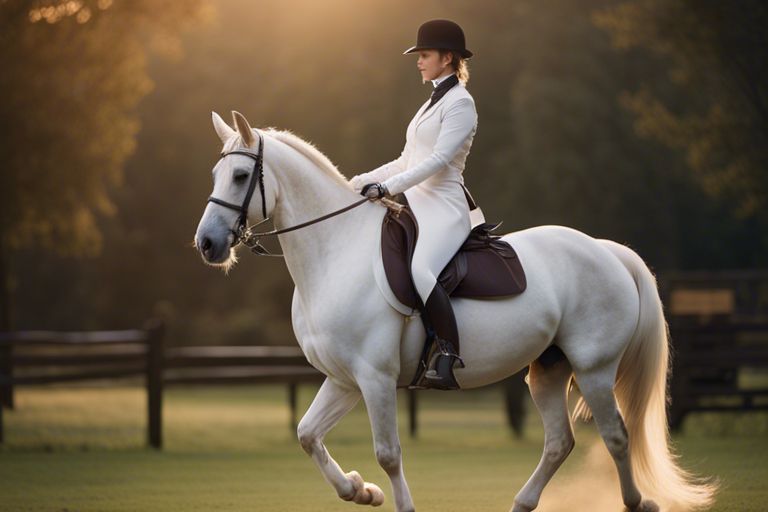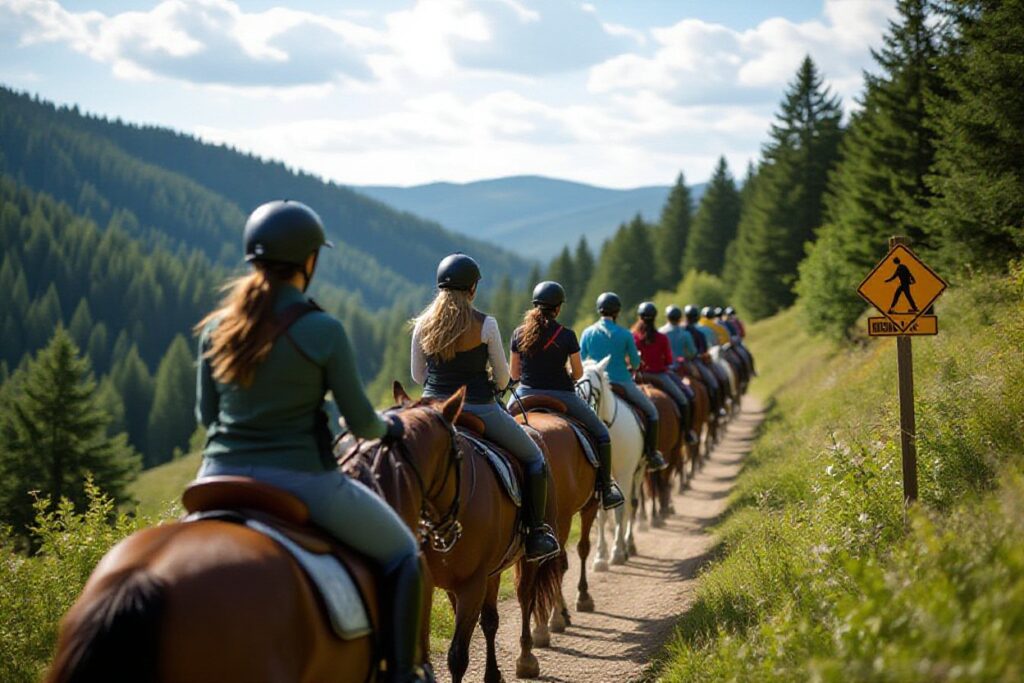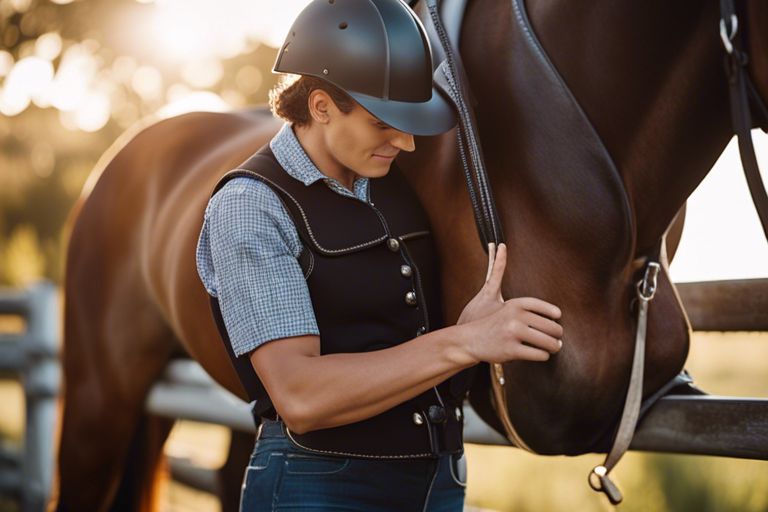Many riders underestimate the impact of proper posture and balance when it comes to horseback riding. Not only does a correct posture enhance your appearance in the saddle, but it also increases your stability and reduces the risk of accidents. In this guide, we will explore practical tips and exercises to help you improve your riding posture and enhance your balance for a safer and more effective ride.
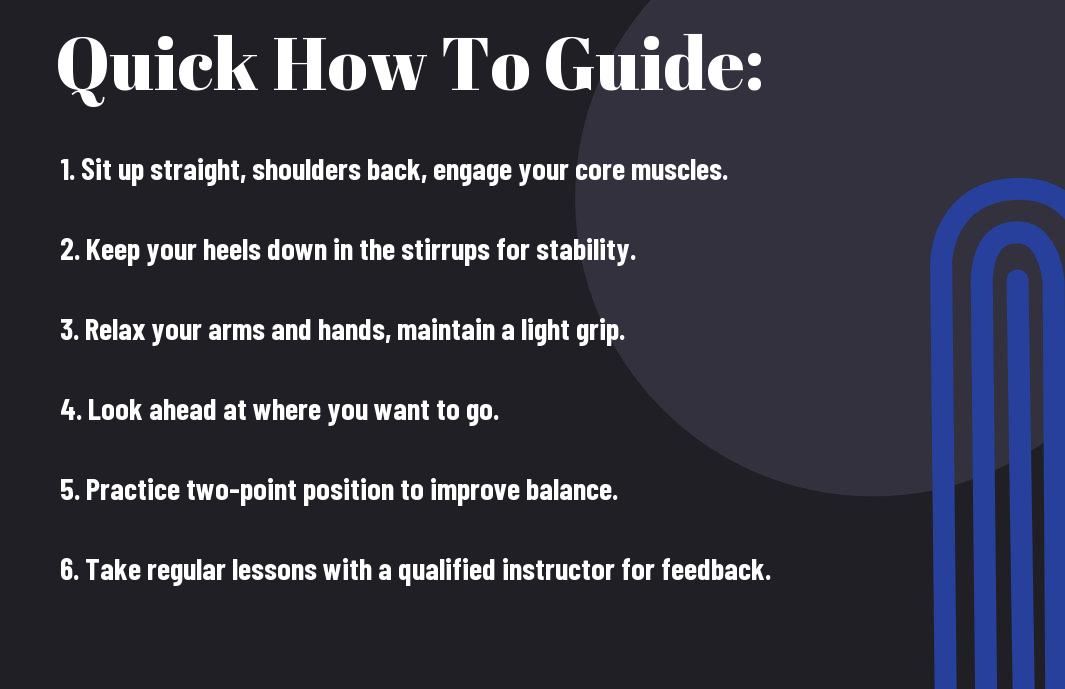
Understanding the Importance of Good Riding Posture and Balance
The Role of Posture in Maintaining Control
Even if you are an experienced rider, maintaining good posture is imperative for staying in control of your horse. Your posture affects how well you communicate with your horse through your aids and signals. By sitting up straight with your shoulders back and looking forward, you are better able to give clear and precise cues to your horse, leading to smoother transitions and movements.
The Impact of Poor Posture on Rider Safety
Even a slight slouch in your posture can have a significant impact on your safety while riding. Good posture helps distribute your weight evenly and improves your balance, reducing the risk of falls or injuries. On the other hand, poor posture can make you more susceptible to losing your balance and being unseated by sudden movements or spooks from your horse.
Good posture also plays a crucial role in protecting your spine and joints from strain or long-term damage. By maintaining proper alignment and muscle engagement, you can prevent muscle fatigue and potential injuries that result from poor posture habits.
How Balance Affects Horse and Rider Performance
Posture and balance go hand in hand when it comes to horseback riding. Your balance directly influences how well you can follow your horse’s movements and adjust your own position accordingly. When you are in sync with your horse, this harmony enhances your performance in various disciplines, from dressage to jumping.
Affects of good balance also extend to your horse, as improved balance allows you to give more subtle aids and cues, resulting in a more responsive and willing partner. When you are balanced and centered in the saddle, you are lighter on your horse’s back, promoting better movement and overall comfort for your equine companion.
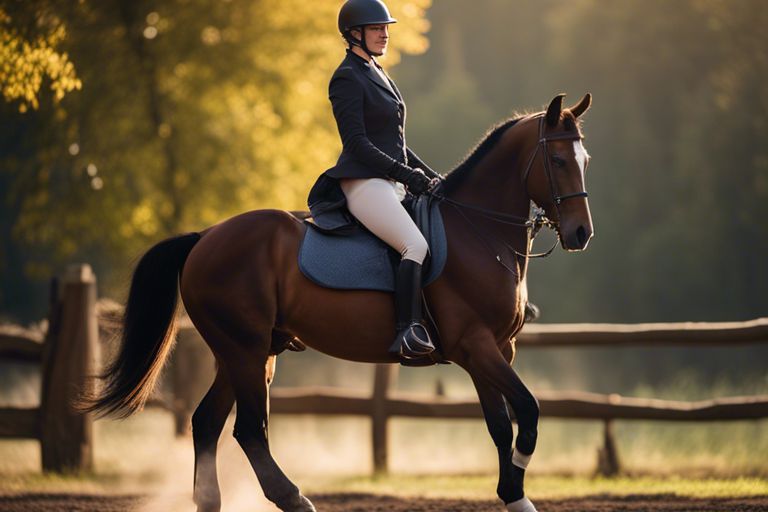
Identifying Factors Affecting Riding Posture and Balance
Little aspects can affect your riding posture and balance in significant ways. Understanding these factors can help you improve your overall performance in the saddle. It’s crucial to recognize what influences your posture and balance so that you can address any issues effectively.
Physical Limitations and Injuries
Posture is heavily impacted by your physical condition. Any existing injuries or limitations can affect how you sit in the saddle and maintain balance. For example, if you have a stiff back or tight hip flexors, it can be challenging to achieve the proper alignment and position while riding. It’s crucial to address these physical issues through proper stretching, strengthening exercises, and, if necessary, seeking guidance from a healthcare professional specialized in equestrian-specific injuries.
Saddle Fit and Equipment
Clearly, the saddle fit and the equipment you use play a significant role in your riding posture and balance. An ill-fitting saddle can cause discomfort, affecting how you sit on the horse and impacting your balance. The same goes for other equipment, such as stirrups and reins, which should be adjusted correctly to support your position in the saddle.
Affecting your riding experience, the saddle should allow you to maintain a neutral spine position without forcing you into an unnatural posture. It’s crucial to regularly check the fit of your saddle and equipment to ensure they support your riding goals effectively.
Horse Temperament and Training
Balance in the saddle is influenced by your horse’s temperament and training. For instance, a nervous or untrained horse can make it challenging for you to maintain your balance, especially in demanding situations such as tight turns or unexpected movements. Understanding your horse’s behavior and training level can help you anticipate and react to their actions effectively, improving your overall balance in the saddle.
For instance, a well-trained horse can help you develop a more secure seat and enhance your balance through consistent and predictable movements. It’s crucial to establish a strong partnership with your horse based on trust and communication to improve your riding posture and balance.
Rider Experience and Confidence
An crucial aspect of improving your posture and balance in the saddle is identifying your level of experience and confidence. Your riding skills and comfort level can significantly impact how you sit and ride effectively. Riders with more experience tend to have better posture and balance due to their familiarity with different riding scenarios and horses.
Tips for Improving Your Riding Posture
After riding for a while, you may find that your posture starts to slump and your balance is affected. To help you improve your riding posture, here are some tips you can follow:
Maintaining a Neutral Spine
For maintaining a neutral spine while riding, make sure to sit tall in the saddle with your shoulders back and down. Keep your hips aligned with your heels and avoid rounding your back or arching it too much. The key is to keep your spine in a straight line from your head to your tailbone. Engaging your core muscles will help you maintain this position throughout your ride.
The neutral spine position not only improves your posture but also helps distribute your weight evenly and stabilizes your balance on the horse.
Engaging Your Core and Leg Muscles
Improving your riding posture involves engaging your core and leg muscles to support your body. By actively contracting your core muscles, you can stabilize your torso and pelvis, which in turn helps you maintain a strong and centered position on the horse. Your leg muscles play a crucial role in providing support and balance as well.
For instance, focusing on squeezing your thighs and wrapping your legs around the horse can help you stay secure in the saddle and communicate effectively with your horse through your leg aids.
Relaxing Your Shoulders and Arms
To relax your shoulders and arms while riding, allow your arms to hang naturally by your sides and keep your elbows bent and close to your body. Avoid tensing up or raising your shoulders, as this can lead to stiffness and imbalance. Remember to breathe deeply and maintain a relaxed posture throughout your ride.
Posture is key here, as tension in your shoulders and arms can affect your horse’s movement and responsiveness to your cues.
Adjusting Your Seat and Position
Position yourself properly in the saddle by adjusting your seat and leg position to find the most comfortable and effective alignment. Your seat bones should rest evenly on the saddle, and your legs should hang long and relaxed with your heels down. A proper seat and position not only improve your balance and stability but also enhance your communication with the horse through subtle weight shifts.
Seat adjustment is crucial in maintaining a secure and effective riding posture, so take the time to find the right position that works best for you and your horse.
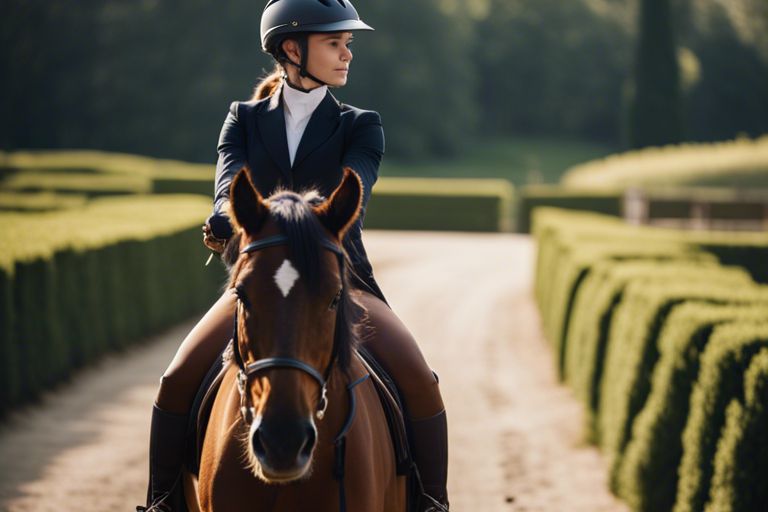
How to Develop Better Balance in the Saddle
Keep in mind that balance is key when it comes to riding. To improve your balance in the saddle, you need to focus on building strength in your core, legs, and seat. This will help you maintain a stable position while riding and prevent you from tipping forward or back.
Exercises for Improving Balance and Coordination
There’s a variety of exercises you can do off the horse to enhance your balance and coordination in the saddle. Incorporate activities like yoga, Pilates, and stability ball exercises into your routine. These exercises will not only help strengthen your muscles but also improve your body awareness and stability.
Practicing Weight Shifts and Transitions
If you want to take your balance training to the next level, focus on practicing weight shifts and transitions while riding. By consciously shifting your weight from one seat bone to the other and performing smooth transitions between gaits, you can improve your overall balance in the saddle. This will also help your horse move more freely and respond better to your aids.
If you find yourself struggling with maintaining balance during transitions, pay attention to your hip movement and try to stay centered over your horse’s center of gravity. By staying light in the saddle and using your core muscles to support your position, you can achieve a more balanced and harmonious ride.
Using Visual Aids and Cues
To reinforce your balance and posture in the saddle, consider using visual aids and cues. Setting up ground poles or cones in the arena can help guide you in maintaining a straight line and correct alignment. Visual markers can also assist you in practicing transitions and adjusting your position accordingly. Bear in mind, consistency in your visual references will help you develop muscle memory for a balanced riding posture.
Importantly, visual aids are not just for beginners – even experienced riders can benefit from incorporating them into their training routine. By consistently using visual cues, you can fine-tune your balance and alignment, leading to a more effective and confident riding performance.
Factors to Consider When Riding Different Horse Breeds
Many factors come into play when riding different horse breeds. Each breed has its own unique characteristics that can influence your posture, balance, and overall riding experience. It’s important to be aware of these factors to ensure a harmonious partnership with your equine companion.
- Adapting to Different Body Types and Sizes
Adapting to Different Body Types and Sizes
To adapt to different body types and sizes when riding various horse breeds, you need to consider the following factors: the height and build of the horse, the length of its neck, and the size of its barrel. Adjusting your riding position and weight distribution based on these attributes will help you maintain balance and posture while riding.
| Height of the Horse | Depending on the height of the horse, you may need to adjust your stirrups and how you distribute your weight. |
| Build of the Horse | The horse’s body shape can affect how you sit in the saddle and how you cue the horse. |
| Length of the Horse’s Neck | The length of the neck can impact how you position your hands and communicate with the horse. |
| Size of the Horse’s Barrel | A wider barrel may require you to adjust your leg position for better contact and communication. |
| Weight Distribution | Being mindful of how you distribute your weight can help the horse maintain balance and move freely. |
Though adjusting to different body types and sizes may take some practice, being aware of these factors will help you become a more balanced and effective rider in the long run.
- Accommodating Unique Breed Characteristics
Accommodating Unique Breed Characteristics
If you are riding different horse breeds, you must accommodate their unique characteristics to optimize your riding experience. Each breed has specific traits such as gait, energy level, temperament, and conformation that can affect how you ride and communicate with the horse.
This knowledge will help you understand how to adapt your riding style to maximize your performance and ensure the horse is comfortable and responsive under your guidance.
- Adjusting Your Riding Style for Optimal Performance
Adjusting Your Riding Style for Optimal Performance
Consider how your riding style can be adjusted to enhance performance when riding different horse breeds. Each breed may require a slightly different approach in terms of cues, aids, and positioning. By adapting your techniques to suit the specific characteristics of the breed you are riding, you can achieve optimal results and build a stronger connection with your equine partner.

Advanced Techniques for Refining Your Riding Posture and Balance
Now that you have a solid foundation in your riding posture and balance, it’s time to take it to the next level with some advanced techniques. These strategies will help you fine-tune your position, develop a more responsive seat, and integrate mental preparation and focus into your riding.
- Fine-Tuning Your Position and Alignment
| Technique | Description |
|---|---|
| Adjusting Stirrup Length | Make sure your stirrups are the right length to help maintain correct leg position and alignment. |
| Shoulder Alignment | Keep your shoulders back and aligned with your hips and heels to improve overall balance and stability. |
Developing a More Responsive and Balanced Seat
While maintaining a correct posture is important, developing a more responsive and balanced seat will take your riding to the next level. Focus on engaging your core muscles to absorb the movement of your horse, allowing you to move with them fluidly. By practicing subtle weight shifts and staying relaxed in the saddle, you can communicate more effectively with your horse and enhance your overall performance.
Any advanced rider knows that a balanced seat is crucial for effective communication with your horse. By refining your seat through exercises such as riding without stirrups or practicing different riding disciplines, you can become more in tune with your horse’s movements and respond with precision.
Integrating Mental Preparation and Focus
Advanced riders understand the importance of mental preparation and focus when it comes to refining their riding skills. By visualizing your ride before mounting, setting specific goals for each session, and staying present in the moment, you can enhance your performance and connection with your horse. **A**dditionally, practicing techniques such as mindfulness and breathing exercises can help you stay calm and focused in challenging situations, improving your overall riding experience.
Any experienced rider knows that mental preparation is just as important as physical training when it comes to riding. By developing a strong mental game, you can boost your confidence, increase your focus, and ultimately achieve your riding goals. **A**pplying these advanced techniques to your riding practice will not only enhance your posture and balance but also elevate your overall riding performance.
Summing up
With this in mind, improving your riding posture and balance is crucial for enhancing your overall riding experience. By focusing on keeping your body aligned, engaging your core muscles, relaxing your shoulders, and maintaining a deep seat, you can improve your balance and stability in the saddle. Regular practice and exercises such as two-point position and riding without stirrups can help strengthen your core and leg muscles, leading to better posture and balance while riding.
Q: Why is riding posture and balance important?
A: Riding posture and balance are crucial for maintaining control over your horse, preventing accidents, and communicating effectively with your horse.
Q: What are some tips for improving riding posture?
A: Some tips for improving riding posture include keeping your back straight, shoulders back, heels down, and eyes up. Engaging your core muscles and maintaining a balanced position in the saddle will also help improve your posture.
Q: How can I improve my balance while riding?
A: To improve your balance while riding, focus on keeping your weight evenly distributed in the saddle, centering your balance over your horse’s center of gravity, and following your horse’s movements with your body. Practicing exercises such as two-point position and stirrup-less riding can also help improve your balance.
Q: What are some common mistakes riders make with their posture and balance?
A: Common mistakes riders make with their posture and balance include slouching, looking down, gripping with your knees, leaning forward or backward, and collapsing in the torso. These mistakes can affect your communication with your horse and make you less effective as a rider.
Q: How can I work on improving my riding posture and balance off the horse?
A: You can work on improving your riding posture and balance off the horse by practicing exercises that strengthen your core muscles, improve your flexibility, and enhance your body awareness. Yoga, Pilates, and exercises that focus on balance and stability can all help improve your riding posture and balance.
